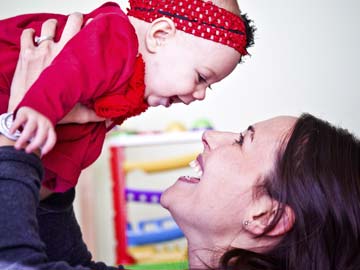
Some participants in the trial showed improvement in certain symptoms, including a decrease in repetitive behaviors.
Although the remedies may sound unconventional, doctors are currently testing whether infecting people with worms or giving them hot baths could reduce some symptoms of autism.
In small, early clinical trials, the unusual treatments — which involve using parasitic worm eggs to trigger anti-inflammatory signals in the gut, or raising the body temperature to mimic the effects of an infection — lessened the repetitive behaviors and other symptoms of the disorders; even so, scientists say the effects must be replicated before the treatments can be considered safe and effective.
“All three studies are interesting and merit further investigation,” said Dr. Andrew Adesman, chief of developmental and behavioral pediatrics at Steven & Alexandra Cohen Children’s Medical Center of New York in New Hyde Park, who was not involved in the studies. “To what extent they can lead to clinical treatment is unclear,” Adesman said. [5 Wacky Things That Are Good for Your Health]
In addition, parents should note that trying such treatments at home, without the guidance of a medical specialist, could be dangerous.
Inflammation and autism
Autism spectrum disorder, or ASD, is a group of developmental brain disorders associated with impairments in social skills, communication problems and repetitive behaviors. The causes of the disorder are not fully understood, but are thought to be complex and varied, and current treatments address only the symptoms.
One theory of what causes autism holds that during pregnancy, activation of the mother’s immune system results in inflammation in the baby, which leads to developmental and behavioral abnormalities. Modern human society, some say, has become hyper-sanitized, ridding humans of exposure to common microbes, and so when exposed to even benign “bugs” their immune systems go on the offense. One of the results is inflammation. Some scientists believe germ-free living may explain the higher incidence of inflammatory disorders, such as asthma and allergies, in developed countries.
Previous research has investigated treatment using parasitic worm eggs, known as Trichura suis ova (TSO), to treat autoimmune diseases, such as Crohn’s disease, finding the treatment to be effective in small studies. Anecdotal reports suggest that TSO infection may reduce certain symptoms of autism by reducing underlying inflammation. TSO is a common pig parasite, but is generally considered harmless in humans.
Dr. Eric Hollander, a clinical psychiatrist at Albert Einstein College of Medicine and Montefiore Medical Center, decided to test the treatment in people with autism. In the trial, five high-functioning young adults with the condition were randomly assigned to drink a dose of worm eggs mixed in saltwater, while another five high-functioning participants with autism were given a placebo for three months. Then, after a one-month period of no treatment, each group received the opposite drink for three months.
While receiving the worm treatment, the participants showed a decrease in the repetitive behaviors that are common among people with autism, according to preliminary results from five of the patients that Hollander presented on Dec. 12 at a meeting of the American College of Neuropsychopharmacology (the other five patients are still doing the trial). However, during the worm treatment, the patients did not show improvement in social or communication skills.
More evidence needed
The Food and Drug Administration has not approved the worm treatment for autism. Scientists will need to demonstrate it’s effective in larger trials first, Hollander said. “Clearly more work needs to be done, but this offers a new avenue for treatments,” he told LiveScience.
Worms aren’t the only type of therapy for autism Hollander is exploring. Another theory suggests high levels of stress on the mother during pregnancy can cause autism by leading to a spike in the stress hormone cortisol, which interferes with the development of a specific signaling pathway in the baby’s brain. [7 Ways Pregnant Women Affect Their Babies]
Changes in this signaling pathway might explain why about a third of children with autism experience improvement in their symptoms when they have a fever, according to reports from parents.
In another study Hollander presented today, 15 children with autism, some of whom had a history of improvement due to fever and some of whom didn’t, soaked in a hot tub at 102 degrees Fahrenheit (38.9 Celsius) or 98 F (37 C) for 30 minutes.
The children who had a history of improvement in their autism symptoms after fever showed some improvement in social skills after spending time in the 102-degree hot tub. Exactly why the heat may help remains unclear, but the temperature might affect certain enzymes that control whether genes are turned on or off in the brain, Hollander said.
Adesman called the study “clever” and “intriguing,” but noted that it was unclear whether children who don’t see their autism symptoms improve from fever also benefit from the hot tub therapy.
Elaine Hsiao, a researcher at Caltech who studies autism and immunity said the research “lends support for immune-based therapies for ASD.”
Growing research shows that microbes with the human body modulate brain function and behavior, Hsiao said. It will be important for researchers to figure out how the worm treatment leads to beneficial effects on behavior, whether it’s through changing the immune system, the digestive tract, or other indirect effects, she told LiveScience.
Hollander also presented a third study today, which involved giving 34 high-functioning adults with autism a drug that blocks reuptake of the brain chemical norepinephrine, which may be activating the same brain circuits as fever does. These adults showed improvements in attention and executive function, Hollander reported, though he called for these findings to be replicated as well.
Source: Mother Nature Network


